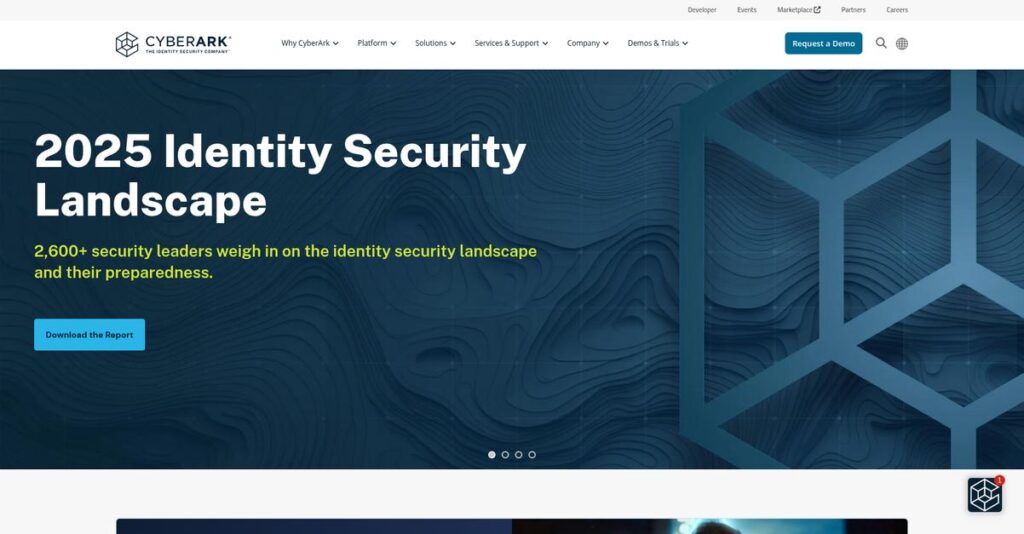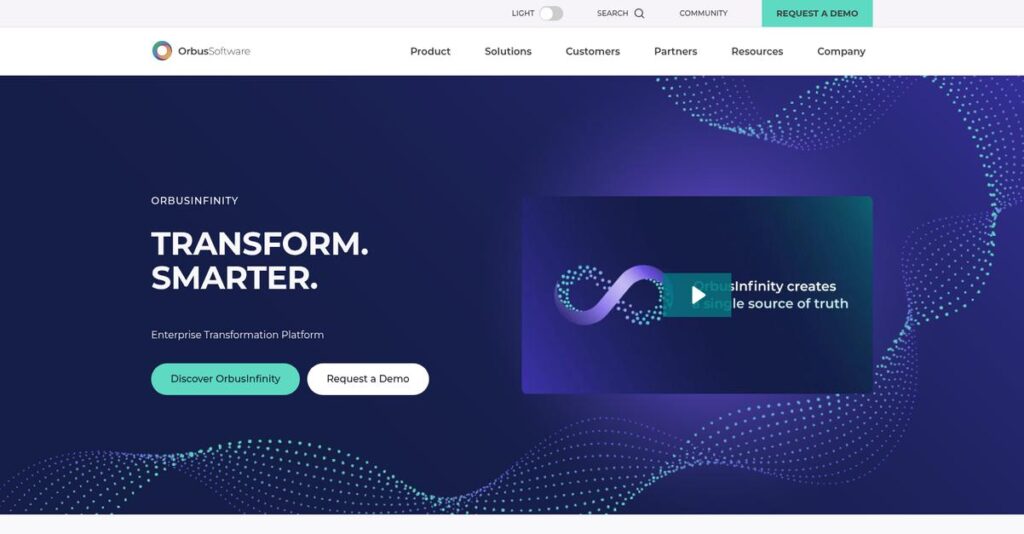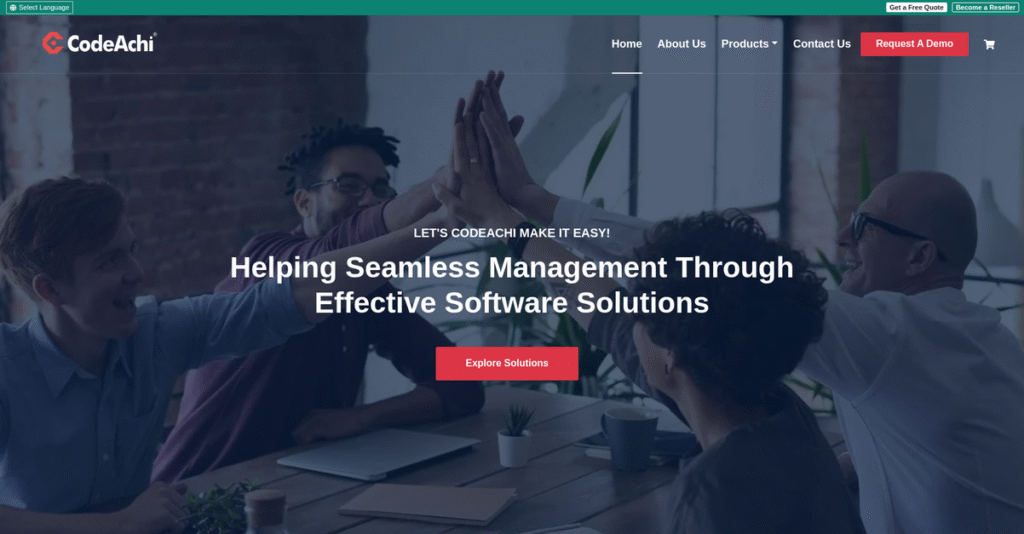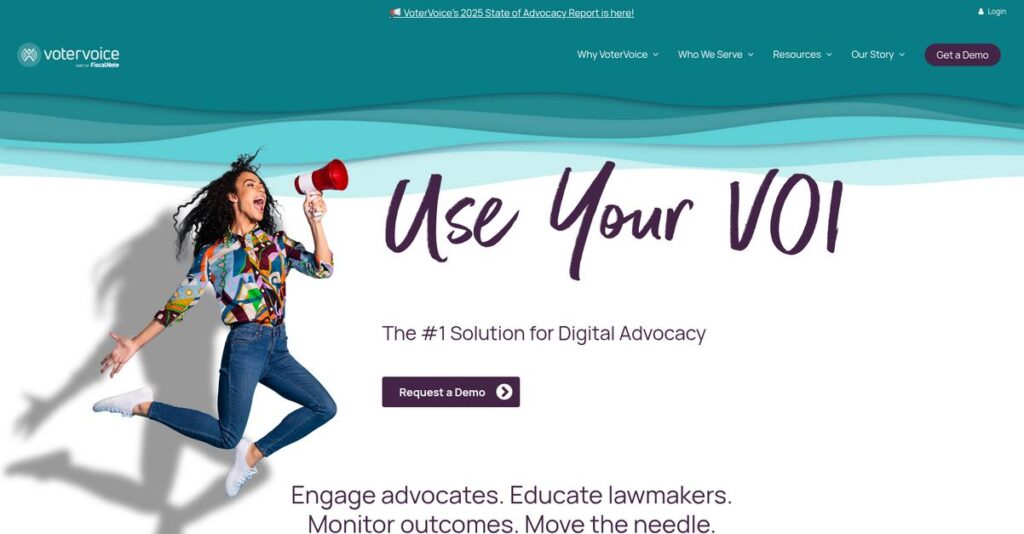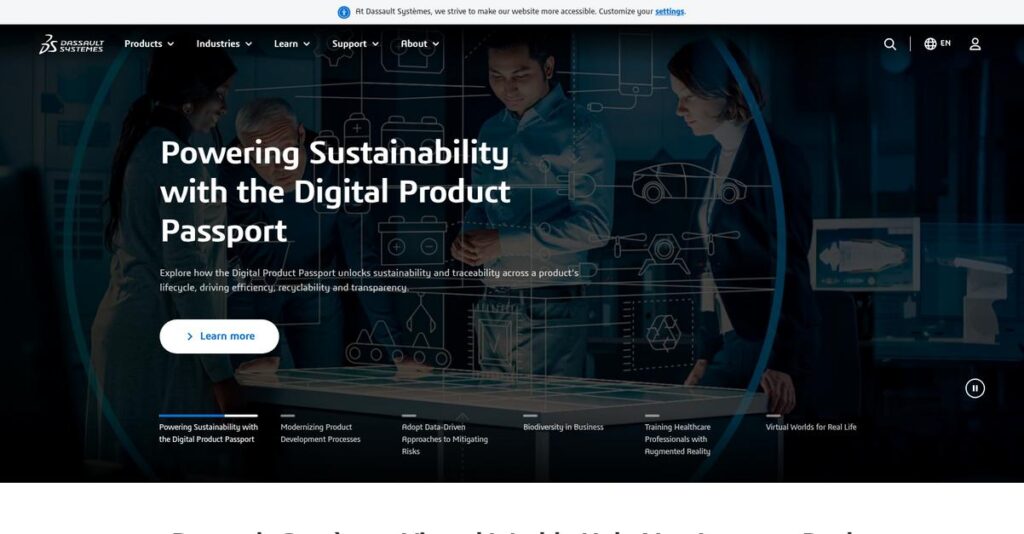Juggling student data shouldn’t feel overwhelming.
If you’re here, you’re probably tired of clunky tools that make managing enrollment, schedules, grades, and communication way more complicated than it needs to be.
Let’s be honest—wasting hours fixing data errors or chasing down information is burning you out and pulling your focus from real student support.
Alma goes all-in on fixing this, offering a cloud-based student information platform that actually integrates everything your school needs—student management, real-time reporting, modern parent portals, and flexible scheduling—without the usual administrative headaches.
In this review, I’ll show you how Alma can help reclaim your time and streamline the mess of school operations, so you can spend more time on what matters.
You’ll find an in-depth Alma review covering features, pricing, real-world usability, and how it genuinely compares to alternative SIS solutions as you work through your decision process.
By the end, you’ll know the features you need to make a confident call about whether Alma is right for your school.
Let’s dive into the analysis.
Quick Summary
- Alma is a cloud-based Student Information System that streamlines K-12 school administrative and academic management.
- Best for K-12 schools seeking an easy-to-use, flexible SIS with strong communication and grading tools.
- You’ll appreciate its intuitive interface and robust support that simplify data management and reduce administrative workload.
- Alma offers custom pricing with demos available but does not provide publicly listed rates or free trials.
Alma Overview
Alma is a cloud-based Student Information System built specifically for K-12 schools. Their entire mission is to slash administrative overhead, letting your educators get back to focusing on teaching students, not just managing data.
What really sets them apart is a dedicated focus on modern, integrated school management. They target schools needing a user-friendly SIS that combines essential administrative and academic functions without the overwhelming complexity you might find in older, bulkier legacy platforms.
What’s telling is their responsive product direction. Through this Alma review, it is clear they actively evolve the platform based on direct, practical feedback from educators who are actually using it in the field every single day.
Unlike broader competitors that can be overkill, Alma is all about usability. I find their key value is a modern interface and streamlined implementation, making it far less intimidating for non-technical staff to adopt and use effectively.
They work with K-12 schools and districts ready to move past clunky systems. Their sweet spot is organizations seeking a more intuitive and efficient solution for their entire staff.
Their strategy emphasizes flexibility for modern instructional methods and strong parent communication. This directly addresses the need for data-driven teaching and better family-school engagement.
Now let’s examine their core capabilities.
Alma Features
Tired of juggling disconnected school admin tools?
Alma features offer a cloud-based Student Information System (SIS) designed to centralize and streamline K-12 school operations. These are the five core Alma features that help reduce administrative burdens for educators.
- 🎯 Bonus Resource: While discussing administrative tools, my article on best cold email software offers insights for effective outreach.
1. Student Information Management
Struggling to get a full view of your students?
Scattered student data makes it hard to track progress or identify needs quickly. This can lead to missed opportunities for support.
Alma centralizes all student data, including demographics, attendance, and academic history, providing a holistic view. From my testing, the ease of accessing comprehensive student profiles is incredibly helpful for educators and administrators. This feature ensures you have all the information at your fingertips.
This means you can make more informed decisions about student well-being and academic performance.
2. Enrollment and Registration (AlmaStart)
Is your school’s enrollment process a headache?
Manual admissions and registration are often inefficient and prone to errors. This can cause frustration for both staff and families.
The AlmaStart feature automates your admissions, enrollment, and registration processes, ensuring accuracy and efficiency. What I love about this approach is how multilingual parent and student portals allow families to complete everything online, making the experience smoother.
So you can drastically reduce administrative time spent on paperwork and boost family satisfaction.
3. Advanced Scheduling
Is complex scheduling making your head spin?
Managing diverse bell schedules and adapting to mid-term changes can be incredibly challenging. This often leads to scheduling conflicts and wasted time.
Alma provides flexible and adaptive scheduling capabilities that handle everything from daily bells to transitions for remote or hybrid learning. Here’s where Alma shines: it adapts to various instructional models, which simplifies even the most complex scheduling scenarios.
This means you can quickly adjust schedules to meet evolving educational requirements without a hitch.
4. Grade Management
Are your grading methods rigid and time-consuming?
Sticking to one grading system or manually tracking student performance can be inefficient. This limits your ability to truly assess student understanding.
Alma offers both standards-based and traditional gradebooks, allowing educators to track and analyze performance in real-time. I found that the ability to customize rubrics for Common Core standards simplifies generating accurate electronic report cards. This feature empowers teachers with versatile grading options.
The result is your team gets precise insights into student performance and can easily provide meaningful feedback.
5. Communication and Engagement Portals
Struggling to keep parents and students in the loop?
Fragmented communication channels lead to missed announcements and disengaged families. This can hinder a collaborative learning environment.
Alma provides dedicated, multilingual portals for parents and students, fostering consistent communication. From my testing, the integrated group messaging and bulletin board features ensure everyone stays informed on grades, schedules, and assignments. This feature makes it easy to send emergency notifications.
This means you can build stronger home-school connections and enhance overall community engagement effortlessly.
Pros & Cons
- ✅ Intuitive interface and user-friendly navigation for quick adoption.
- ✅ Centralized student data management provides a holistic view.
- ✅ Responsive and helpful customer support team is consistently praised.
- ⚠️ Multi-year reporting limitations require manual data merging.
- ⚠️ Basic financial module lacks comprehensive billing features.
- ⚠️ No dedicated mobile app for parents or students.
These Alma features work together to create a powerful, integrated SIS platform that empowers schools to focus more on teaching and student development.
Alma Pricing
What will Alma pricing actually cost your school?
Alma pricing operates on a custom quote model, meaning you’ll need to contact sales directly to get a personalized quote for your specific K-12 school’s needs.
Cost Breakdown
- Base Platform: Custom quote (Contact sales)
- User Licenses: Reportedly $6-12 per student (likely tiered)
- Implementation: Included in custom quote (likely scaled by school size)
- Integrations: Varies by complexity of existing systems
- Key Factors: School size, specific feature requirements, student count
1. Pricing Model & Cost Factors
Confused by custom pricing?
Alma’s pricing structure is tailored, reflecting the diverse requirements of K-12 schools. Your final Alma pricing will primarily depend on factors like your school’s student count and the specific features or modules you require. What I found regarding pricing is it’s directly tied to your school’s scale.
From my cost analysis, this means your budget gets a system designed for your exact needs, avoiding unnecessary features.
2. Value Assessment & ROI
How much value for your budget?
Given Alma’s comprehensive SIS capabilities, from enrollment to grading and communication, the custom pricing aims to provide significant ROI by centralizing operations. From my cost analysis, the value proposition is strong for K-12 schools seeking to modernize and reduce administrative burdens compared to managing disparate systems.
This helps you justify the investment by streamlining workflows and freeing up educators’ time for teaching.
3. Budget Planning & Implementation
What about total ownership costs?
When budgeting for Alma, consider that while the per-student model is a key factor, the overall quote will encompass implementation and potential integration costs with existing school software. What makes their pricing work is they factor in everything upfront with custom quotes.
Budget-wise, you can expect a comprehensive solution that helps you avoid unexpected expenses post-purchase.
My Take: Alma’s custom pricing is designed for K-12 institutions needing a scalable, integrated SIS, ensuring you only pay for the features and capacity your school truly requires.
The overall Alma pricing reflects tailored value for your specific school’s operational needs.
Alma Reviews
What do real Alma customers think?
This customer reviews section analyzes patterns in Alma reviews from various platforms, offering balanced insights into what actual users experience, helping you understand their true sentiments.
1. Overall User Satisfaction
Users are highly satisfied.
From my review analysis, Alma consistently garners strong approval ratings, indicating a generally positive user sentiment. What I found in user feedback is how the ease of adoption significantly reduces friction for schools migrating to a new SIS.
This suggests you can expect a relatively smooth transition and quick integration into your daily operations.
2. Common Praise Points
Its user-friendliness consistently shines.
Users frequently laud Alma for its intuitive interface and straightforward navigation, making it easy for staff to quickly grasp. Review-wise, the responsive customer support team stands out, providing crucial assistance and rapid issue resolution, which users deeply value.
- 🎯 Bonus Resource: Before diving deeper, you might find my analysis of application lifecycle management software helpful for understanding how such systems are built and maintained.
This means you’ll likely find the system easy to learn and have reliable help when needed.
3. Frequent Complaints
Some reporting limits exist.
While Alma’s reporting is robust, some reviews highlight limitations, especially concerning multi-year data analysis. What stands out in customer feedback is how the basic financial module often necessitates third-party tools, particularly for complex billing needs, creating extra steps.
These issues are generally manageable, but you should anticipate potential workarounds for specific financial or advanced reporting tasks.
What Customers Say
- Positive: “Nothing makes a difference more than an awesome Customer Support Team and Alma’s is beyond compare.”
- Constructive: “Reports are often limited to a single academic year, requiring manual merging for multi-year data.”
- Bottom Line: “Alma is quickly becoming the central nervous system for our entire district.”
The overall Alma reviews reflect genuine user satisfaction with practical reservations about some specialized features.
Best Alma Alternatives
Too many Student Information Systems?
The best Alma alternatives include several strong options, each better suited for different educational institutions, budget realities, and specific operational requirements.
1. PowerSchool SIS
Need more robust analytics and mobile access?
PowerSchool SIS excels if your institution demands advanced, in-depth analytics for student performance and a more comprehensive mobile application experience for users. From my competitive analysis, PowerSchool offers superior analytics and mobile functionality compared to Alma’s streamlined approach.
Choose PowerSchool when extensive data insights and powerful mobile accessibility are your top priorities.
2. Blackbaud K-12 SIS
Seeking integrated fundraising and accounting solutions?
Blackbaud K-12 SIS is strong for schools needing an integrated solution extending beyond core SIS functions to include fundraising, accounting, and superior data visualization. Alternative-wise, Blackbaud integrates broader financial and data insights, which Alma does not directly provide in its core SIS.
Consider Blackbaud if your school requires a more comprehensive suite beyond just student management.
3. Gradelink
Prioritizing integrated financial and medical tracking?
Gradelink is a better fit if your school requires comprehensive built-in financial modules for billing and payments, detailed medical tracking, and a dedicated mobile app for parents. What I found comparing options is that Gradelink offers integrated financial and medical modules, alongside a dedicated mobile app that Alma lacks.
Choose Gradelink when full financial integration and robust medical record-keeping are critical needs.
4. RenWeb (FACTS SIS)
Specifically serving private or faith-based institutions?
RenWeb (now FACTS SIS by Nelnet Business Solutions) is often preferred by private and faith-based schools due to its highly integrated financial management features. From my analysis, FACTS SIS excels in tuition and financial aid management, often more comprehensively than Alma’s basic fee tracking.
Choose FACTS SIS if your institution needs robust, integrated financial management tailored to private school operations.
- 🎯 Bonus Resource: Speaking of financial tools, if you’re also looking into digital assets, my article on crypto portfolio management software covers comprehensive strategies.
Quick Decision Guide
- Choose Alma: User-friendly, academically focused SIS with modern interface
- Choose PowerSchool SIS: Advanced analytics and robust mobile application experience
- Choose Blackbaud K-12 SIS: Integrated fundraising, accounting, and strong data visualization
- Choose Gradelink: Comprehensive financial modules and detailed medical tracking
- Choose RenWeb (FACTS SIS): Integrated financial aid and tuition management for private schools
The best Alma alternatives depend on your school’s specific administrative and financial integration needs rather than just core features.
Alma Setup
What about your Alma setup?
This Alma review includes a practical look at what it takes to deploy this SIS. You’ll gain insights into its simplicity and what to expect for your implementation.
- 🎯 Bonus Resource: While we’re discussing software systems, understanding revenue cycle management software is vital for financial operations.
1. Setup Complexity & Timeline
Expect a surprisingly smooth deployment.
Alma implementation is generally straightforward, with an in-app “Navigator” guide that provides step-by-step instructions. From my implementation analysis, the ease of setup reduces migration headaches and minimizes the overall time commitment, allowing quicker transitions for schools.
You’ll appreciate Alma’s intuitive design, which simplifies the initial configuration and reduces the need for extensive upfront planning.
2. Technical Requirements & Integration
Minimal technical hurdles await you.
Since Alma is a cloud-based solution, your technical requirements are light: internet access and standard devices like laptops or tablets. What I found about deployment is that it’s accessible on mobile-friendly portals for parents and students, requiring no special hardware installations or complex integrations.
Your IT team will find setup easy, focusing on network access rather than server provisioning or elaborate software installations.
3. Training & Change Management
User adoption is remarkably quick.
Alma’s intuitive interface minimizes the learning curve for staff, students, and parents, making extensive training less critical. From my analysis, its user-friendliness contributes to quick adoption across all user groups, reducing resistance to change often seen with new systems.
You can focus on familiarizing users with workflows rather than teaching complex system navigation, leading to smoother transitions.
4. Support & Success Factors
Vendor support makes a real difference.
Alma’s customer support is consistently praised for being responsive and helpful during implementation and ongoing use. What I found about deployment is that their team helps resolve issues quickly, ensuring your setup stays on track and any challenges are swiftly addressed.
Plan to leverage their support team early and often; their responsiveness is a significant asset for your implementation success.
Implementation Checklist
- Timeline: Weeks to a few months depending on school size
- Team Size: Existing administrative staff plus IT lead
- Budget: Primarily software costs; minimal for professional services
- Technical: Internet access, standard devices, and browser compatibility
- Success Factor: Leveraging Alma’s in-app Navigator and support
Overall, Alma setup is refreshingly simple, offering a smooth and intuitive implementation that reduces time and training, getting your school operational quickly.
Bottom Line
Is Alma the right fit for your school?
This Alma review synthesizes the platform’s capabilities, user feedback, and overall value proposition, helping you determine if it aligns with your institution’s specific needs and priorities.
1. Who This Works Best For
K-12 schools seeking a modern, user-friendly SIS.
Alma excels for K-12 institutions, from small independent schools to large districts, prioritizing ease of use, strong communication, and flexible academic management. From my user analysis, schools focused on enhancing parent and student engagement will find Alma’s portals and messaging particularly effective.
You’ll succeed with Alma if you need to streamline administrative tasks and empower educators with intuitive tools for modern teaching.
2. Overall Strengths
Intuitive design simplifies daily school operations.
The software succeeds by offering an exceptionally user-friendly interface, comprehensive student information management, and highly responsive customer support. From my comprehensive analysis, Alma’s flexible grading and robust communication tools significantly improve engagement across the entire school community.
These strengths translate directly into faster adoption, reduced administrative burden, and improved overall operational efficiency for your school.
3. Key Limitations
Multi-year reporting could use refinement.
While Alma offers robust current-year reporting, some users have noted limitations with multi-year analysis, often requiring manual data merging. Based on this review, comprehensive financial management requires third-party integrations as Alma’s native module is quite basic.
I’d say these limitations are manageable trade-offs for its core strengths, especially if your school is comfortable with a best-of-breed software strategy.
- 🎯 Bonus Resource: Before diving deeper, you might find my analysis of loan management software helpful if you’re also exploring financial tools.
4. Final Recommendation
Alma earns a strong recommendation for K-12 schools.
You should choose this software if your K-12 institution values a modern, intuitive SIS that prioritizes ease of use, strong communication, and flexible academic tools. From my analysis, your school will benefit significantly from improved efficiency and enhanced stakeholder engagement using this platform.
My confidence level is high for schools seeking a robust SIS solution without needing deeply integrated ERP functionalities.
Bottom Line
- Verdict: Recommended for K-12 schools and districts
- Best For: K-12 institutions prioritizing user-friendly design and communication
- Business Size: Small to large K-12 schools and districts
- Biggest Strength: Intuitive interface and robust communication tools
- Main Concern: Multi-year reporting limitations and basic financial module
- Next Step: Request a demo to see if Alma fits your school’s needs
This Alma review confirms strong value for most K-12 institutions, providing an intuitive and effective SIS, while highlighting considerations for specialized needs.
